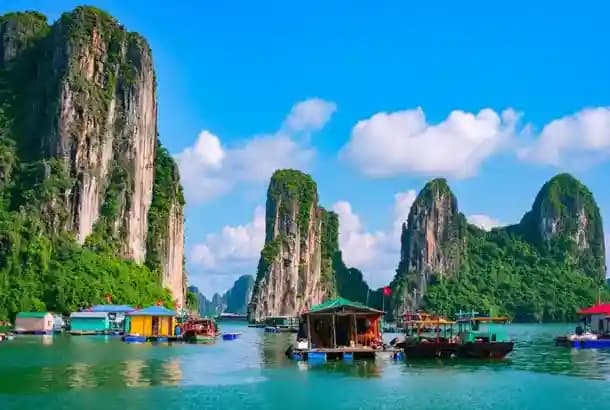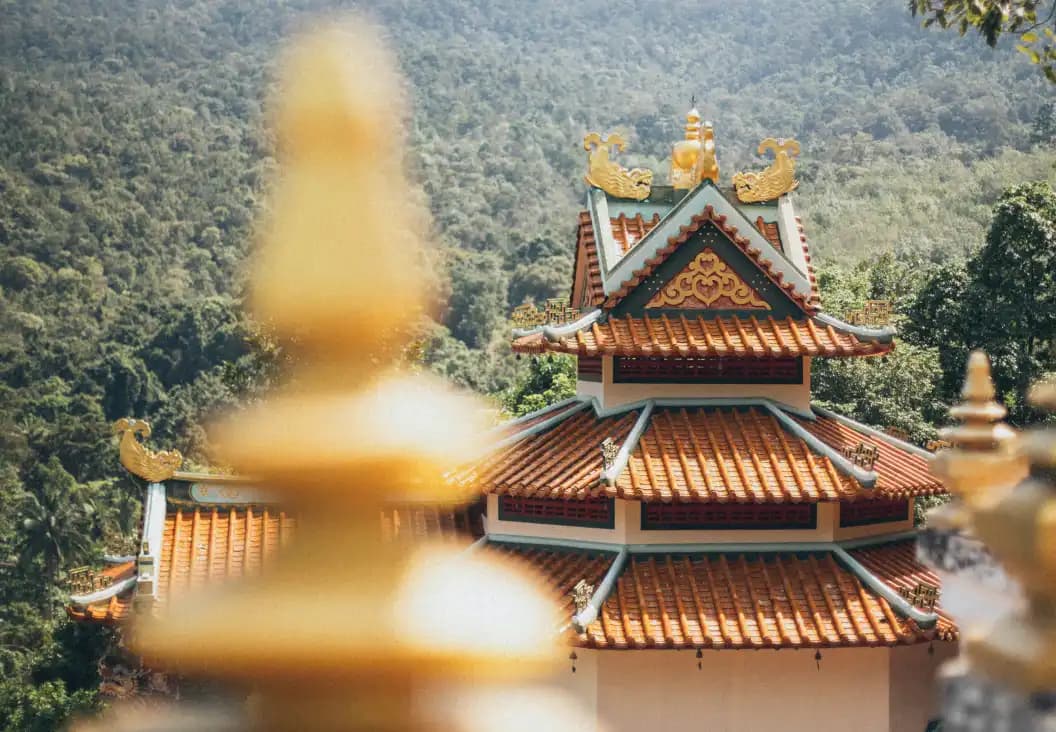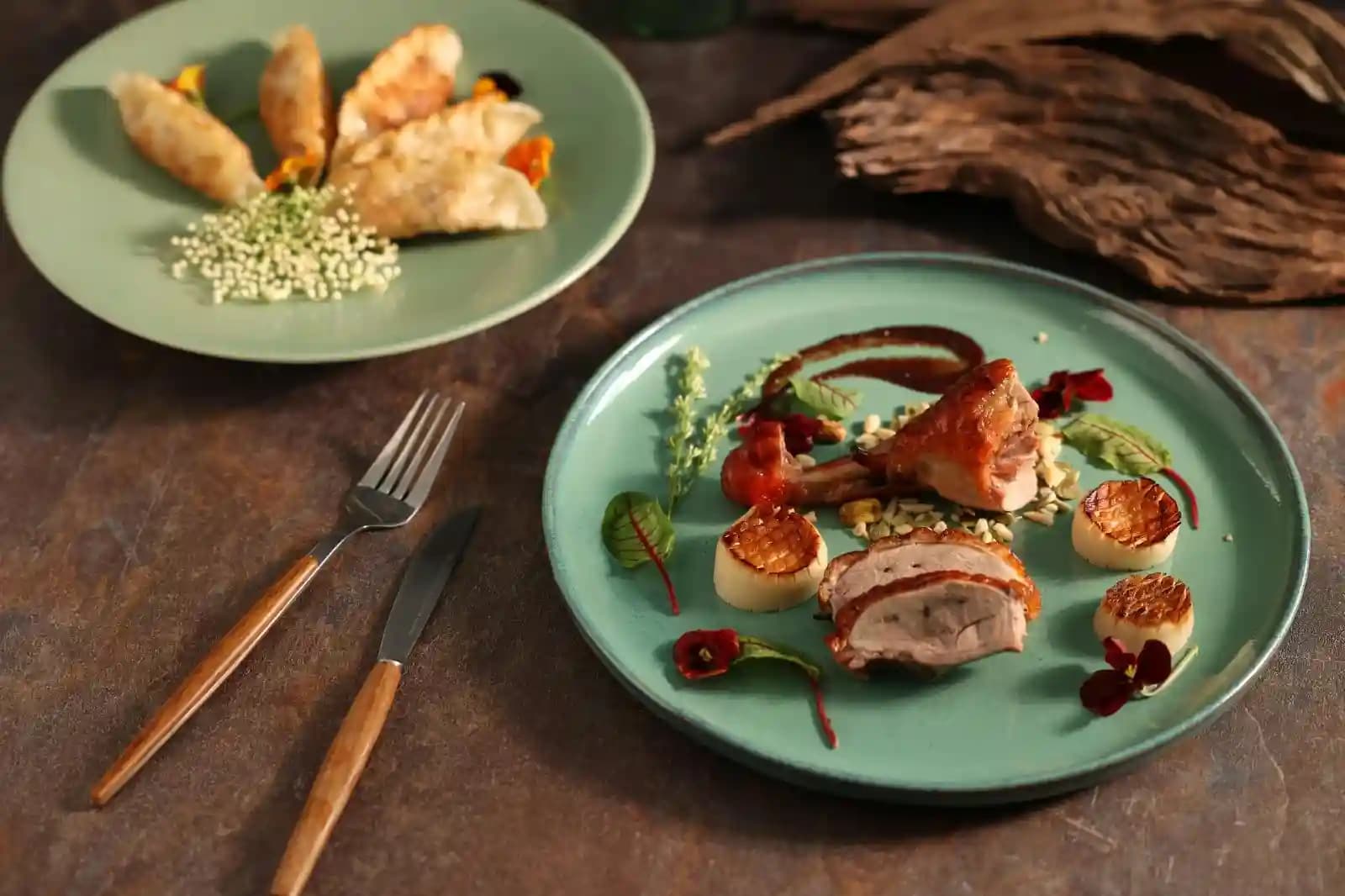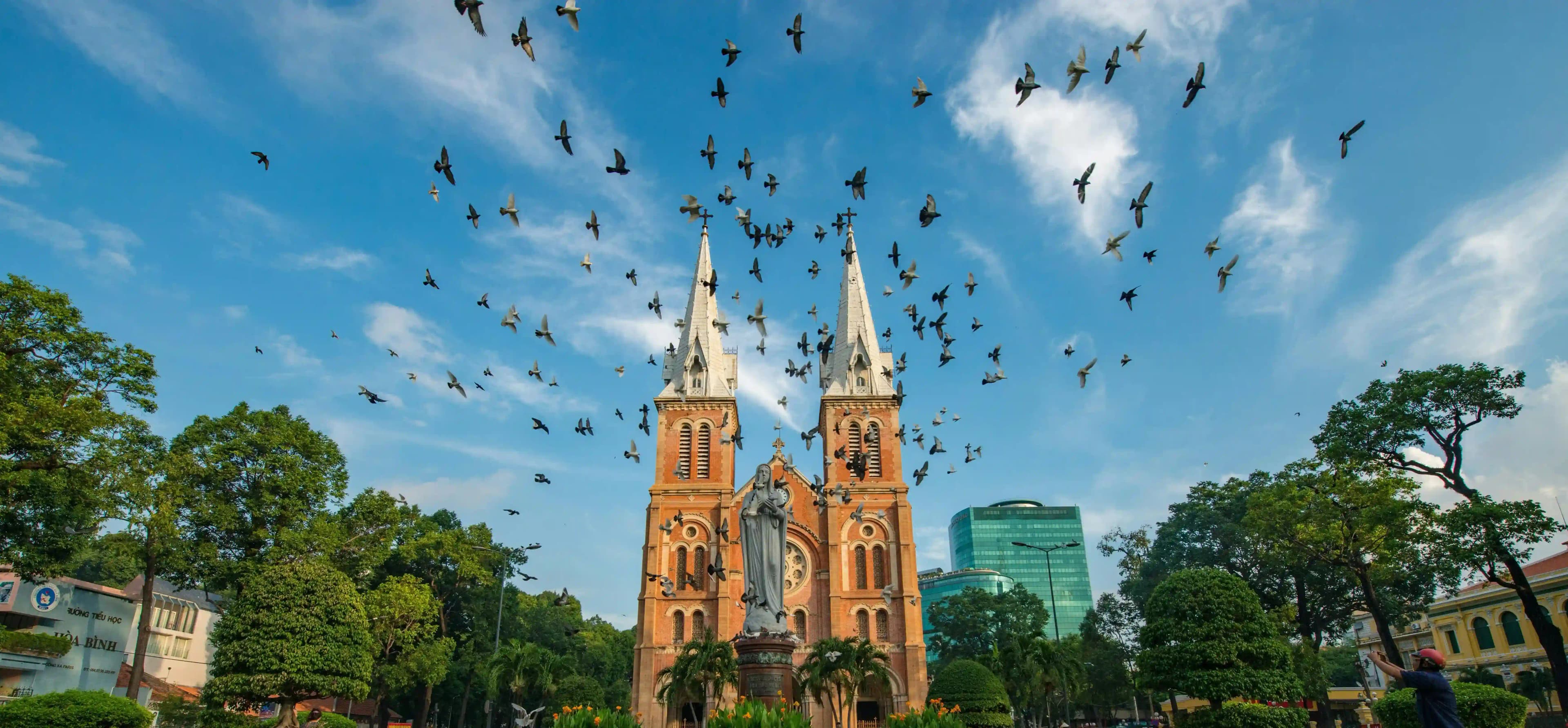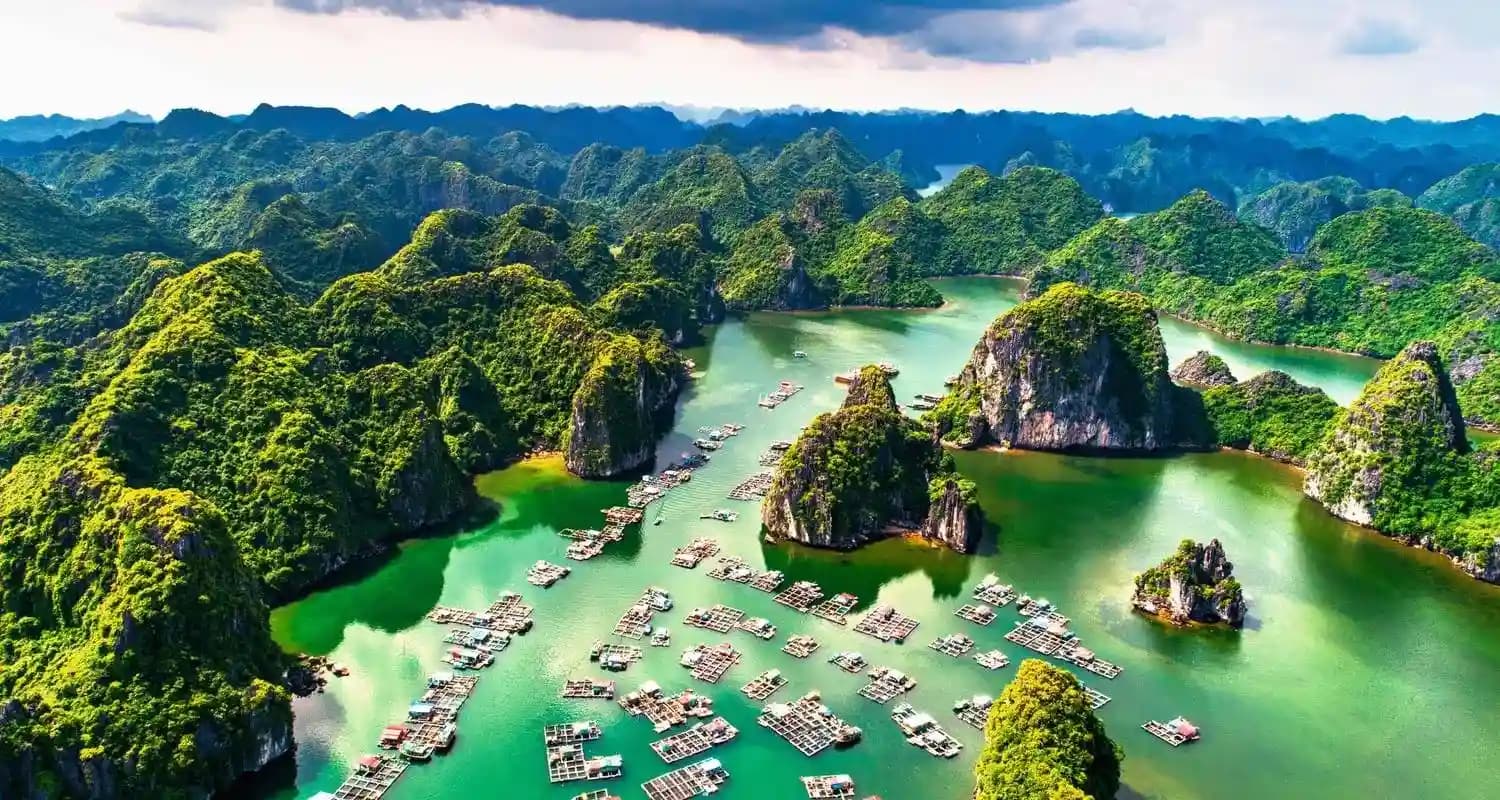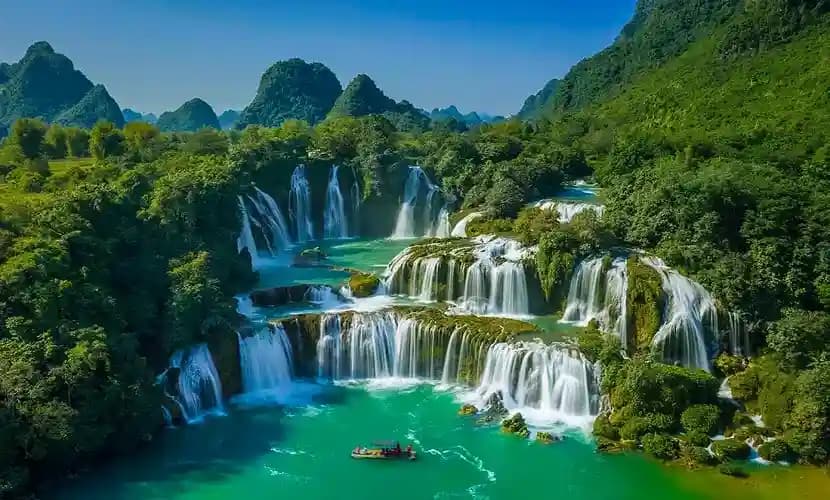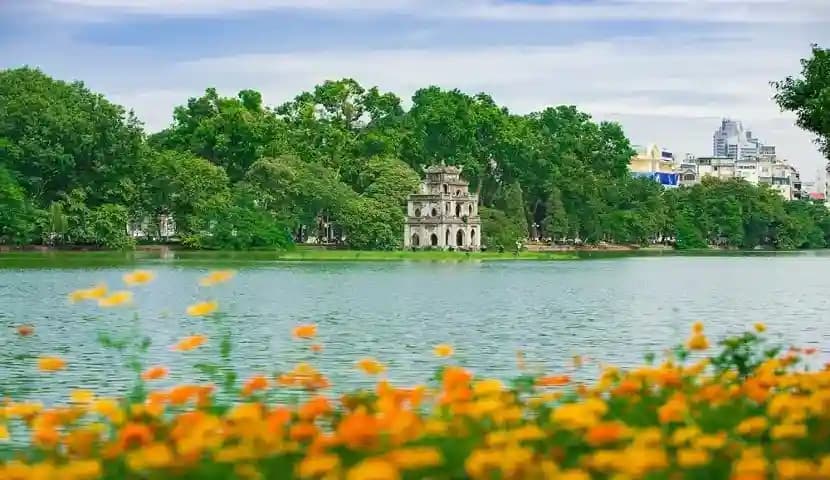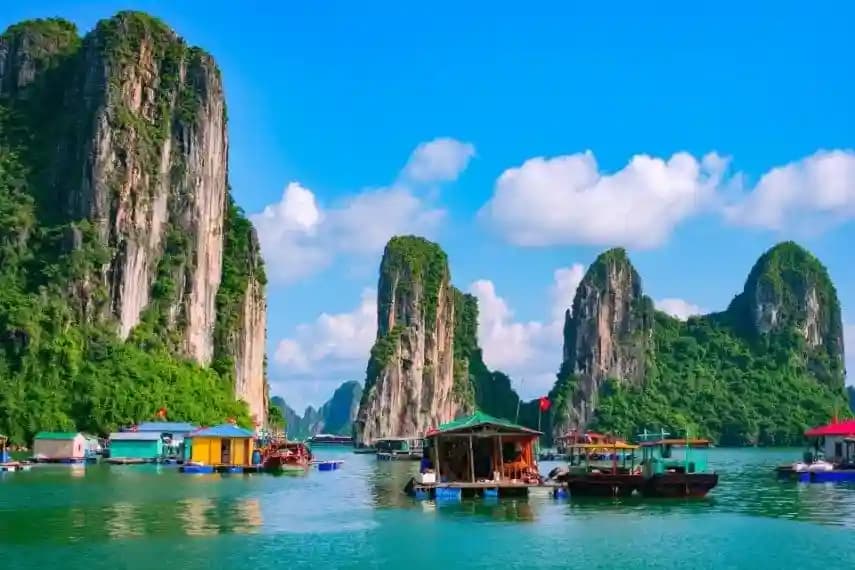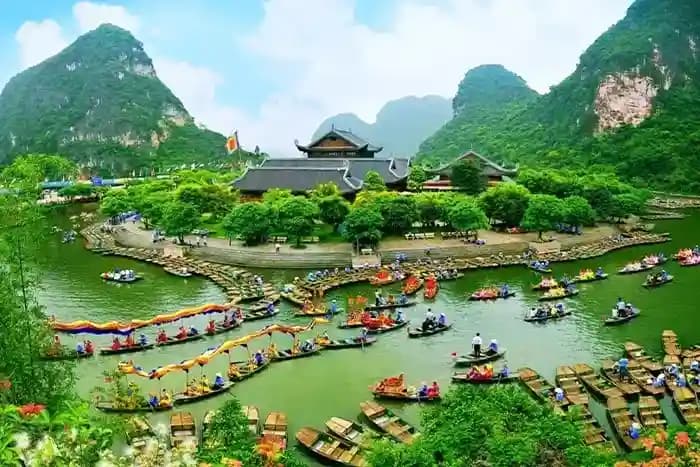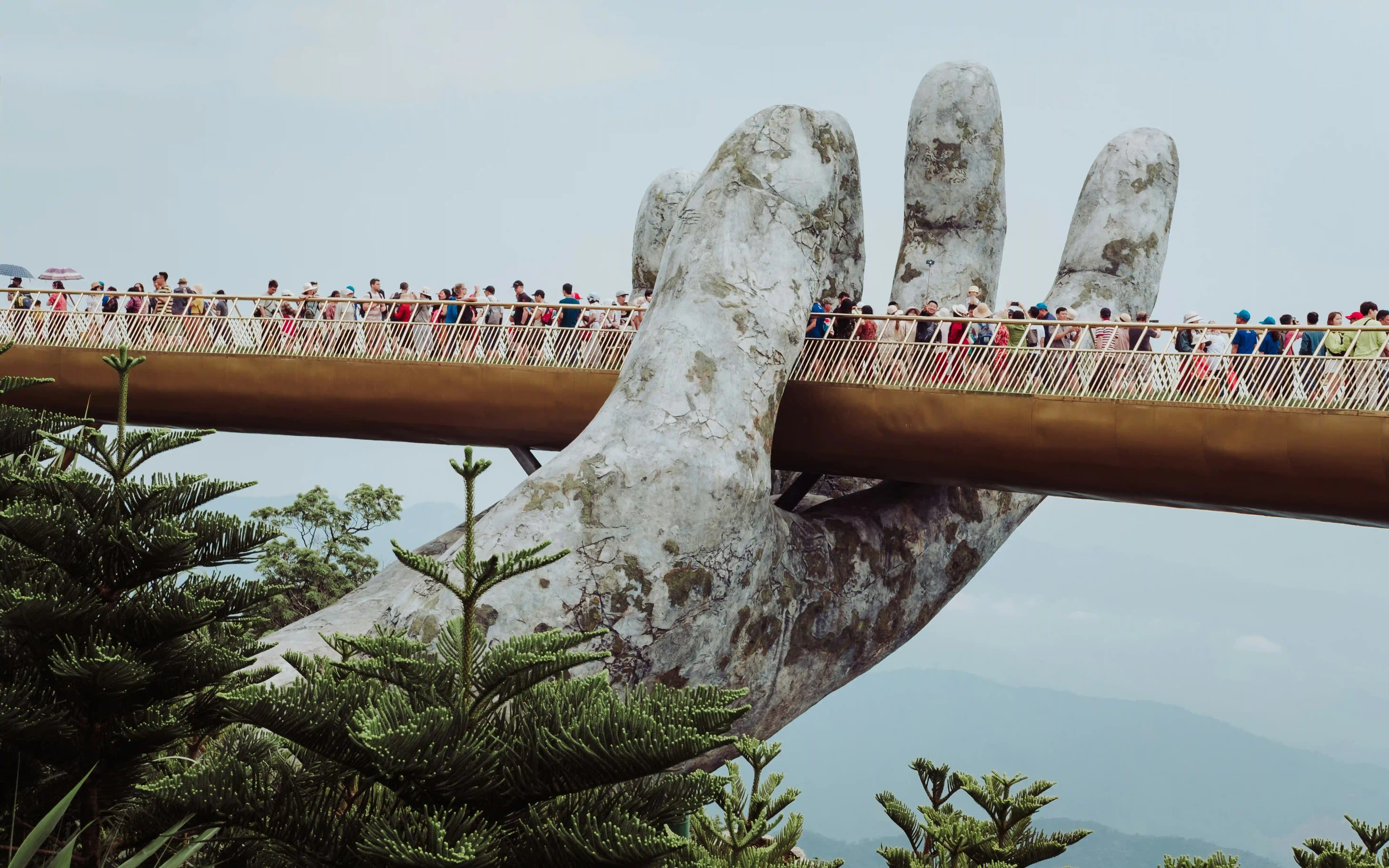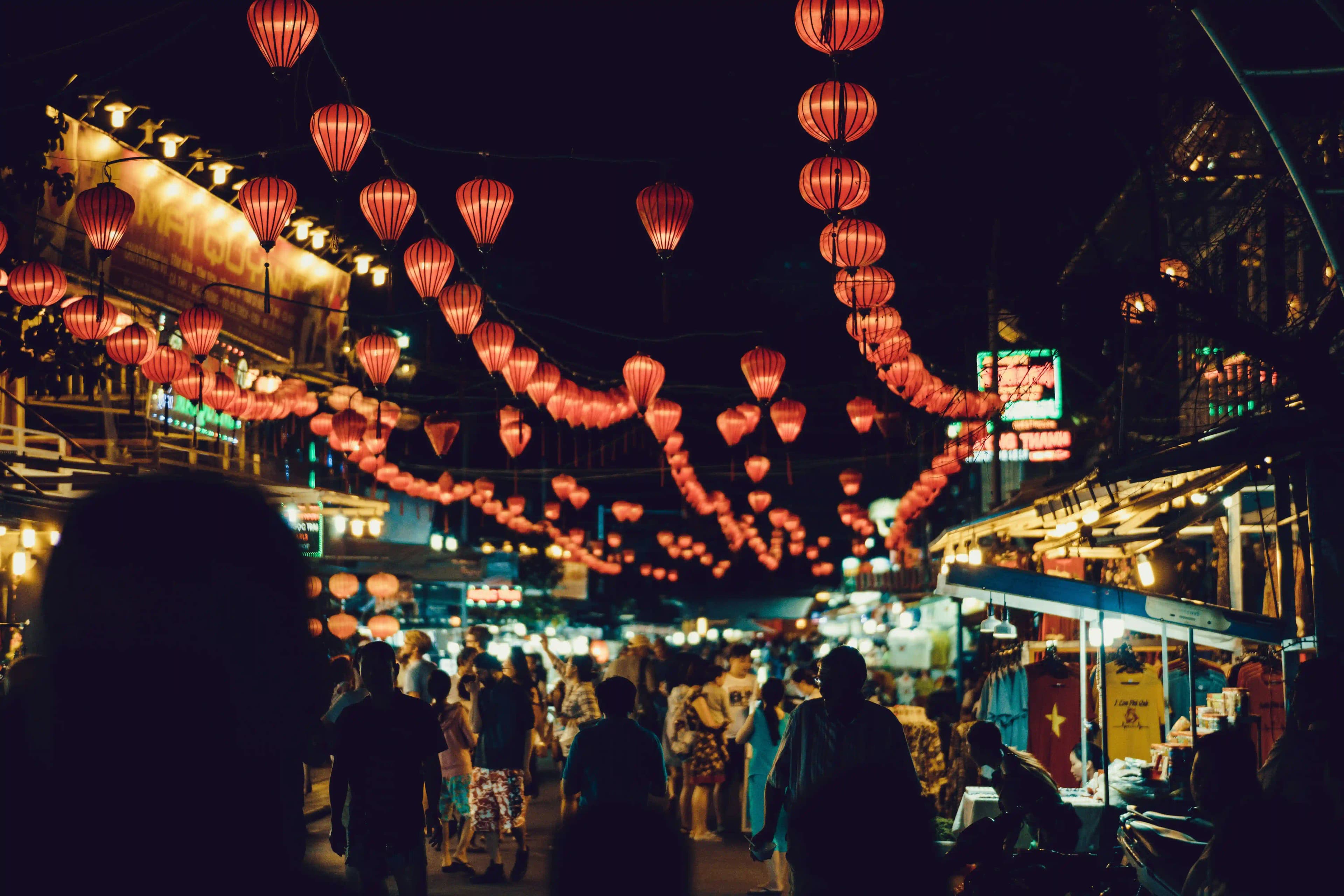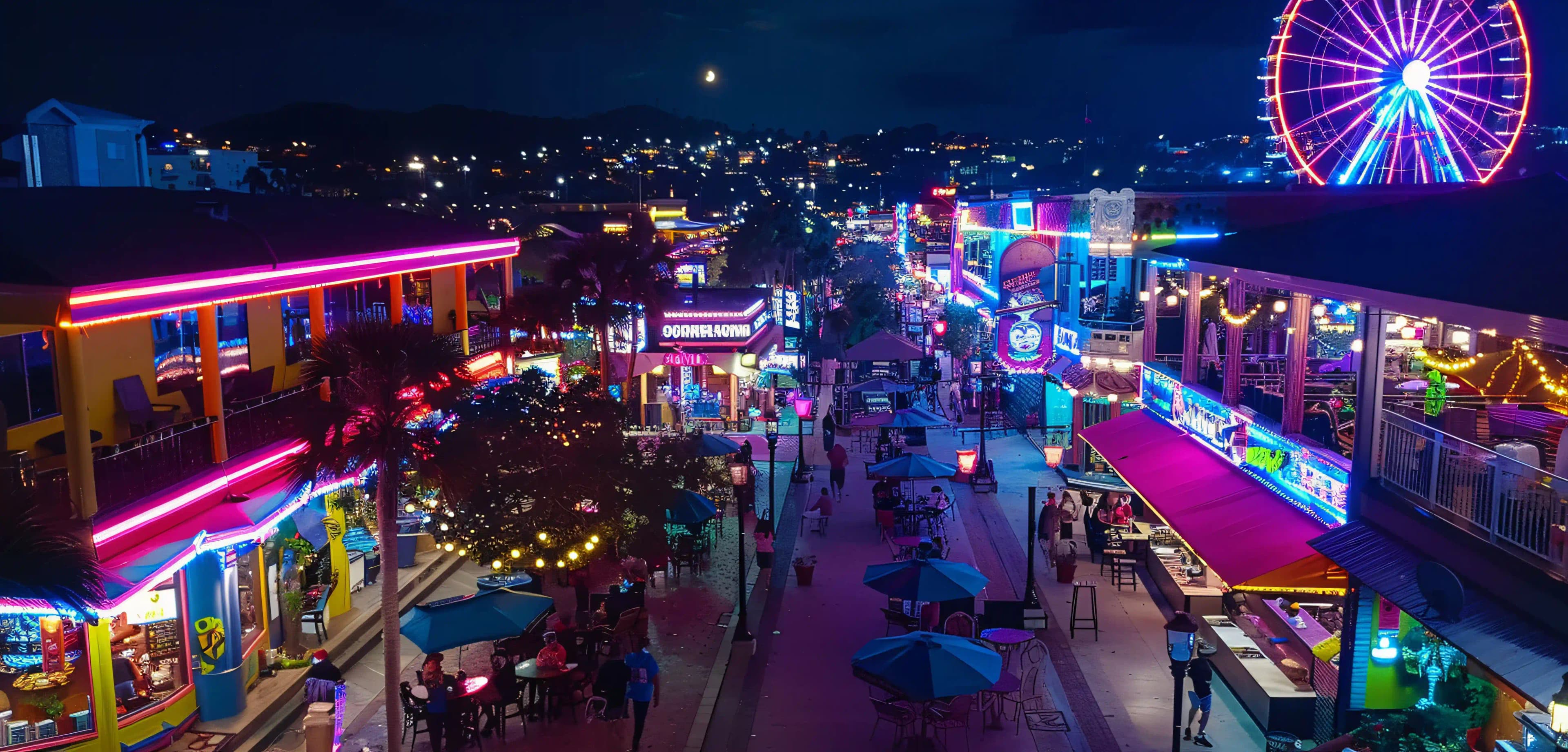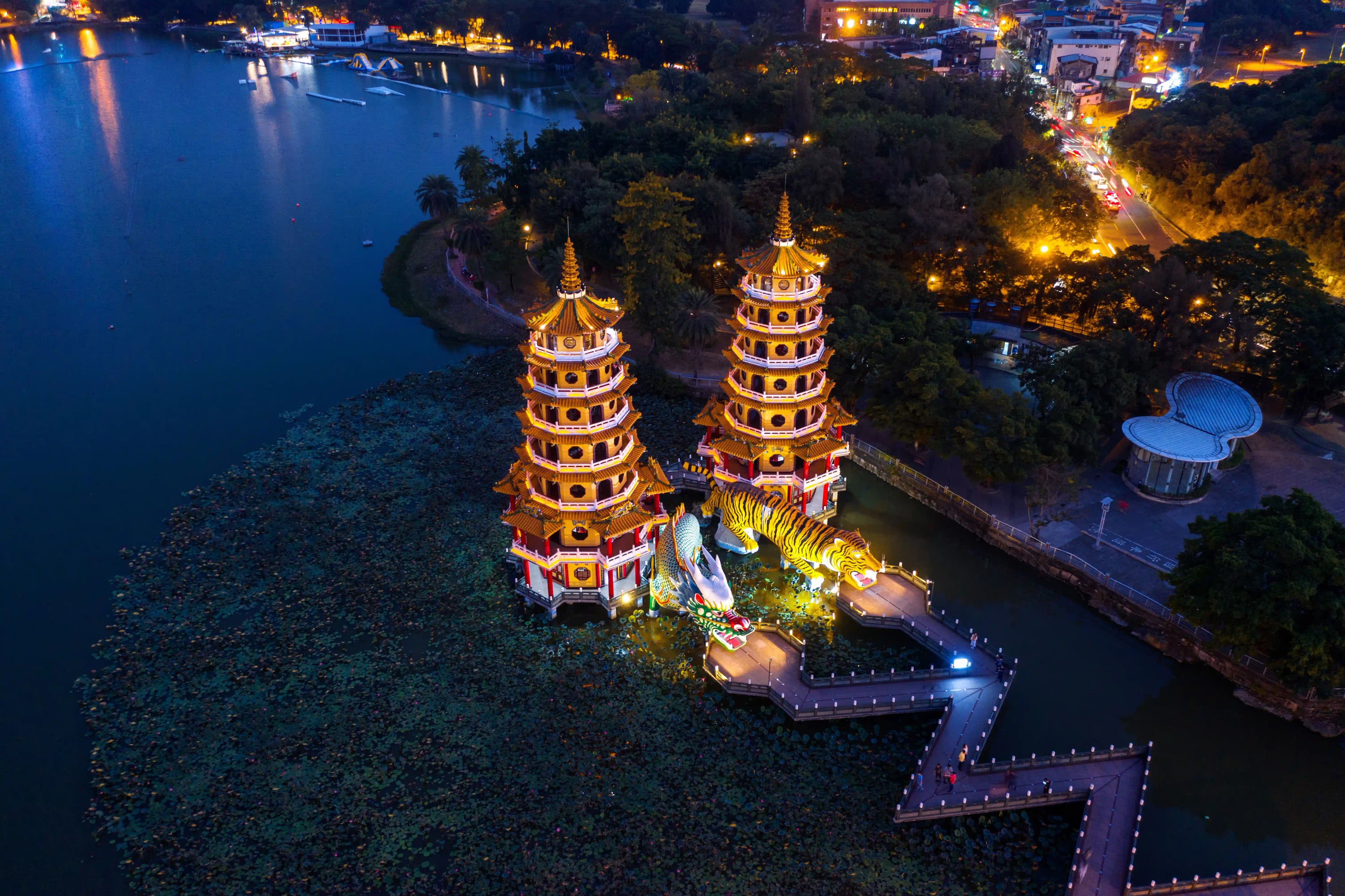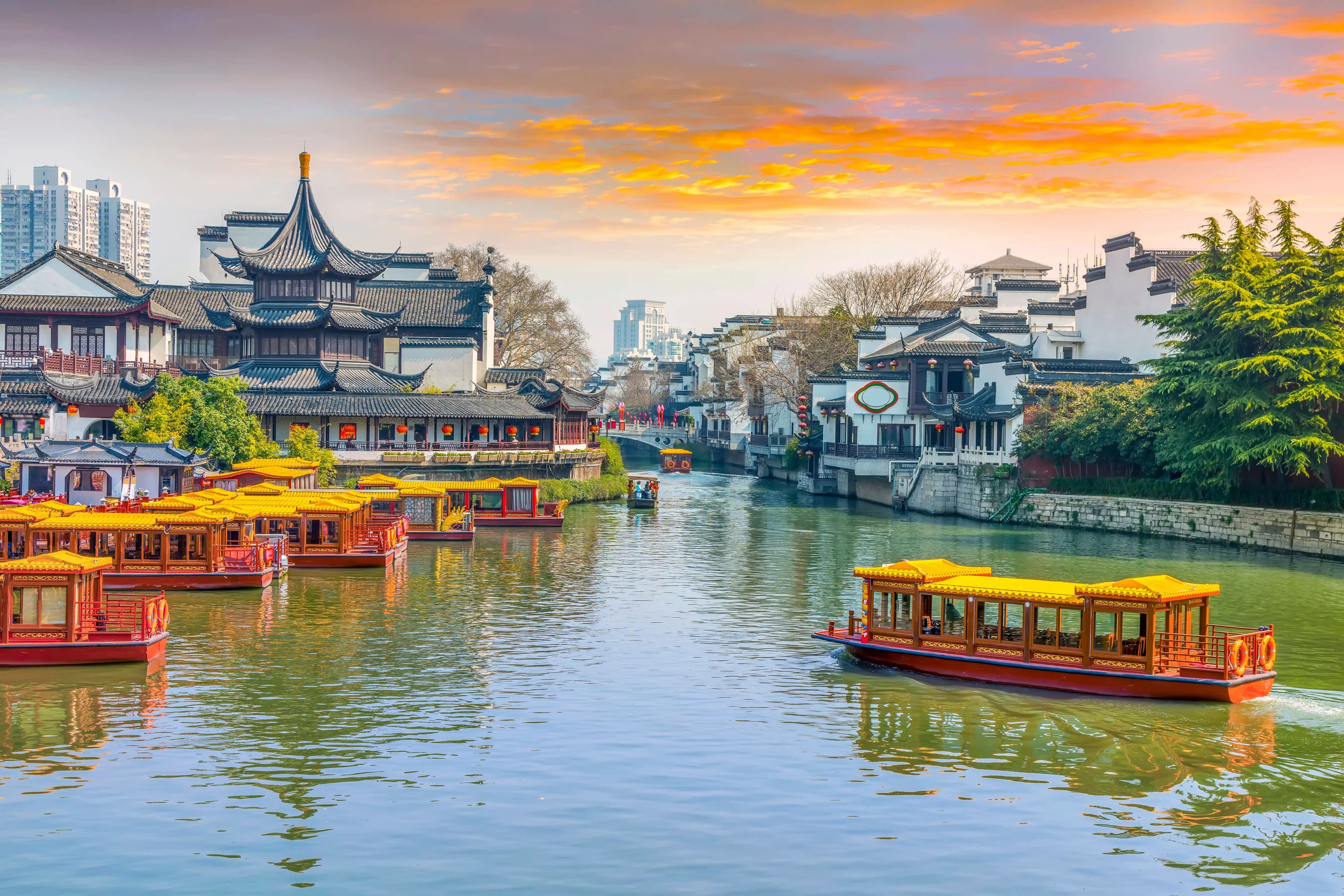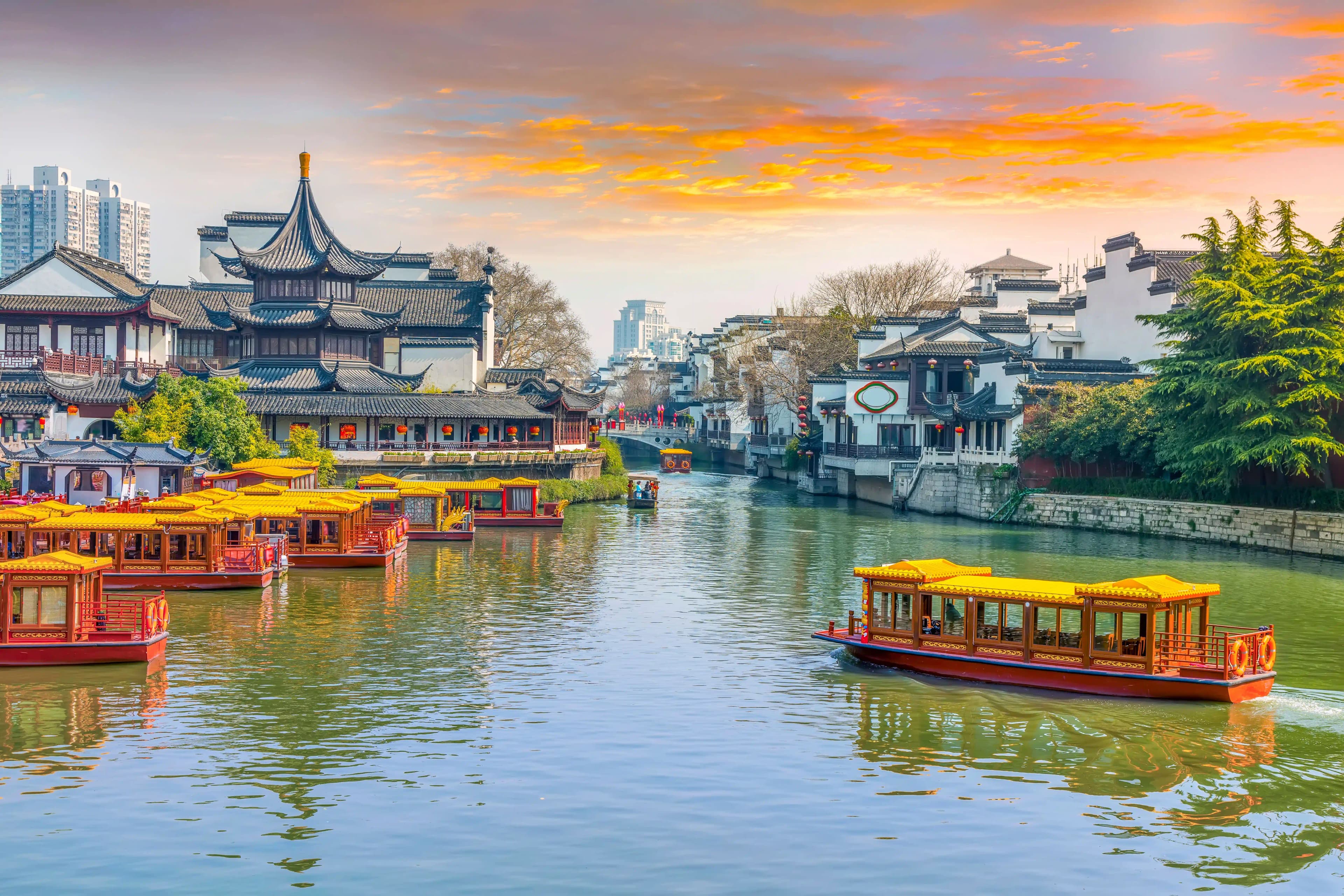The captivating beauty and immersive discovery of Vietnam draw visitors into an experience they cannot easily decline. The things to do in Vietnam weave a tapestry of experiences, from jagged limestone peaks to riverside towns glowing with lanterns. History manifests in powerful form throughout this region because it has engraved itself into traditional castles and vibrant market spaces. Additionally, the land transforms from mountain regions veiled in fog to beachfront locations drenched in sunlight. Walking through Vietnam becomes an experience of continual discovery through combinations of tasting street cuisine along with boating across emerald waters. For those keen to explore, Vietnam Tour Packages offer a brilliant way to plan the journey. The guide focuses on valuable recommendations for prime locations together with useful instructions to build a successful adventure.
12 Unmissable Things to Do in Vietnam
Tourism in Vietnam attracts visitors through its amazing visual panoramas combined with rich historical sites, accompanied by animated cultural heritage. The limestone karsts in Ha Long Bay, along with the traditional lantern-lit streets of Hoi An, attract both local residents and foreign visitors in Vietnam. This guide highlights the best things to do in Vietnam and provides practical information to help you plan your perfect itinerary. This recommendation includes precise directions together with customized duration requirements and budget projections in Indian Rupees that are readily available.
1. Cruise Through Ha Long Bay's Emerald Waters

A journey through Ha Long Bay's mystical landscape of towering limestone islands ranks among the top things to do in Vietnam. Traditional Vietnamese junk boats offer breathtaking views while guiding visitors through UNESCO World Heritage sites. Guests may kayak between hidden coves and visit secluded beaches. Cruise passengers can explore remarkable caves, including Surprise Cave, where they can witness breathtaking stalactite structures. Small extravagant boats that avoid popular routes allow visitors to visit the bay's occasional and private sections.
- Location: Quang Ninh Province, Northeast Vietnam
- Best Time: October to April (avoid monsoon season)
- Cost: ₹8,000–₹25,000 for overnight cruises
Suggested Read: Get To Know The Best Places To Visit In Vietnam
2. Wander through Hoi An's Enchanting Ancient Town

The beautifully preserved trading port of Hoi An offers some of the most photogenic things to do in Vietnam. The day brings opportunities to walk through yellow-walled merchant houses as well as visit the Japanese Covered Bridge and shop at riverside markets. The arrival of nightfall brings thousands of silk lantern lights to the streets of this town. The Thu Bon River provides opportunities for boat travel, while visitors can take part in creating lanterns at workshops. The expert tailors of this town produce personalised clothing within one day, which turns it into an exceptional shopping destination.
- Location: Central Vietnam, Quang Nam Province
- Best Time: February to July (dry season)
- Cost: ₹400 for Old Town entrance ticket
3. Discover Ho Chi Minh City's Dynamic Energy

Saigon underwent a name change to become the largest city in Vietnam, where French colonial structures coexist with contemporary skyscrapers. When in the city, tourists should visit the War Remnants Museum, Independence Palace, and Ben Thanh Market. The city's diverse culinary offerings include basic pho establishments and rooftop bars that serve cocktails. Visiting the Cu Chi Tunnels during a day trip lets visitors explore the hidden history of Vietnam's wars. For architecture lovers, the Central Post Office and Notre Dame Cathedral showcase beautiful French colonial designs.
- Location: Southern Vietnam
- Best Time: December to March (cooler months)
- Cost: ₹100–₹300 for most museum entries
Suggested Read: Backpacking Trip To Vietnam
4. Trek Sapa's Spectacular Rice Terraces

One can find among Vietnam's most wonderful views in the mountains that often appear foggy around Sapa. Tourists can trek through successive rice fields while touring communities maintained by Hmong and Dao residents. Visitors who reach Fansipan Peak through its difficult ascent will have sweeping views extending across the Hoang Lien Son mountain range. Travelers can have authentic cultural encounters by staying in home-based accommodations found in local villages, as they can shop for unique handicrafts at the weekend Love Market. Sapa offers Vietnamese visitors a welcome respite from the tropical heat through its cool environmental conditions.
- Location: Northern Vietnam, near the Chinese border
- Best Time: September–November (harvest season)
- Cost: ₹1,500–₹4,000 for guided treks
5. Experience the Mekong Delta's Floating Markets

The "Rice Bowl of Vietnam" exists as a remarkable collection of rivers that integrate swamps and islands. The boats within the Cai Rang floating market start their activity at dawn by carrying tropical vegetables and fruits. Trippers can experience small boat travel through narrow canals while they visit coconut candy processing sites and try traditional delta food, which includes elephant earfish. Tourists who choose to stay overnight on petite islands can experience genuine delta living. The region's unique water-based culture makes it one of the most memorable things to do in Vietnam.
- Location: Southern Vietnam
- Best Time: November to April (dry season)
- Cost: ₹1,000–₹2,500 for boat tours
Suggested Read: Learn About The Best Time To Visit Vietnam
6. Explore Hue's Imperial History

The former imperial capital of Vietnam showcases the magnificent Citadel and the Forbidden Purple City inside it. Tourists along the Perfume River can view royal crypts with the distinct Thien Mu Pagoda standing in the background. The dining tradition in Hue consists of imperial-style royal dishes that were previously reserved for the royal court. A trip by cyclo along the streets adorned by trees allows visitors to experience Hue's French colonial buildings at a tranquil pace. The Biennial Hue Festival serves as a cultural transformation that introduces traditional performances and traditional events throughout the city.
- Location: Central Vietnam
- Best Time: January to April
- Cost: ₹500–₹1,000 for major sites
7. Relax on Phu Quoc's Pristine Beaches

The tropical island features soft white beaches together with its transparent waters. Luxury resorts dominate the 20km extent of Long Beach, and there are also beach bars. Sao Beach impresses visitors with its beautiful laws of white sand. Guests can enjoy top-quality snorkelling along the coral reef system at the An Thoi Archipelago. The night market on Phu Quoc Island provides fresh seafood while offering its famous fish sauce. The position of Phu Quoc as an island city makes it unique among other Vietnamese cities because it combines complete relaxation with memorable adventures.
- Location: Gulf of Thailand, Southern Vietnam
- Best Time: November to March
- Cost: Free (beach access), ₹3,000+ for snorkelling tours
Suggested Read: Vietnam nightlife
8. Marvel at Hanoi's Timeless Charm

The capital city of Vietnam connects its historical temples with its imposing French colonial buildings. The Old Quarter maintains its energy by having busy streets showing street food stands and silk stores. Tourists should not miss exploring the Temple of Literature in combination with seeing both the Ho Chi Minh Mausoleum and Hoan Kiem Lake. The food discovery experience of Hanoi must include tasting both bun cha and egg coffee. The water puppet shows present traditional cultural entertainment within the nation, yet weekend markets allow shoppers to discover excellent items
- Location: Northern Vietnam
- Best Time: October to December
- Cost: ₹100–₹500 for major attractions
9. Adventure in Phong Nha's Massive Caves

The world's largest caves can be found at the magnificent Phong Nha-Ke Bang National Park. Visitors can explore either the pricey Son Doong Cave with its expeditions or experience the beautiful formations found in Paradise Cave and the zip lining and mud-bath activities available at Dark Cave. The park provides exciting jungle trails which merge with underground rivers to form an adventurous destination. The local tour operators provide caving experiences that range from short walks to alloying caving for multiple days.
- Location: Central Vietnam
- Best Time: February to August
- Cost: ₹1,500–₹20,000 (varies by cave)
10. Taste Vietnam's Incredible Street Food
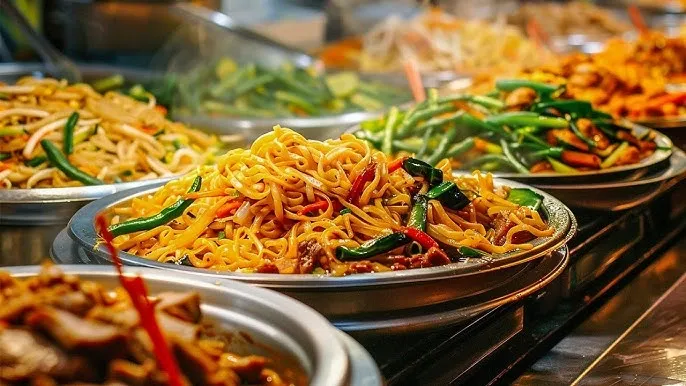
The cuisine of Vietnam is rated as one of the most delicious worldwide. Differentiate between the two Hanoi specialities as bun cha represents grilled pork with noodles and pho ga contains chicken noodle soup. Hoi An's specialties include cao lau noodles and white rose dumplings. The primary culinary influences in Ho Chi Minh City appear through its banh mi sandwich and hu tieu noodle soup dishes. Food tours together with cooking classes serve as excellent methods to discover all of Vietnam's culinary traditions. Traditional street food vendors give visitors the chance to experience Vietnamese culture at remarkably low prices.
- Location: Countrywide
- Best Time: Anytime
- Cost: ₹50–₹300 per dish
11. Ride the Hai Van Pass

Top Gear popularized this breathtaking seaside route, which passes through hills along the ocean. Tourists on this 21km road can admire stunning perspectives of Lang Co Beach along with Danang Bay. Visitors can engage in guided motorbike tours as well as hire safe easy riders for transportation. The drive includes French historic bunkers and Hai Van Gate, which stands abandoned to give tourists historical attractions. Drivers rate the pass among the most picturesque paths in Vietnam.
- Location: Central Vietnam (Danang to Hue)
- Best Time: April to July
- Cost: ₹500–₹2,000 (motorbike rental)
12. Visit the Golden Bridge in Ba Na Hills

The Instagram-famous bridge at this location demonstrates two massive stone hands which support a gold-rimmed pathway crossing through the cloud formations. French Village transforms into a European mountain town that comprises artificial castles and cobbled streets. Travellers can enjoy continuous cable car transportation that provides panoramic mountain vistas during the trip. As well as its park attractions and lovely gardens this site is suitable for families seeking a great destination. The climate in the mountain region offers a cooler environment than the rest of Vietnam.
- Location: Near Danang, Central Vietnam
- Best Time: March to May
- Cost: ₹2,500 (cable car & entrance)
The enduring impression of Vietnam exists because it unites thrilling experiences with peaceful serenity. The things to do in Vietnam span bustling cities, quiet deltas, and caves that feel like another world. All food sampling and walks throughout the country create an experience that embodies the history of Vietnam. Those who visit Vietnam always carry boundless tales consisting of late-night boat cruises and vibrant markets. The country provides endless opportunities for exploration to those who seek adventure and invites visitors to explore again and again. People remember their Vietnamese journey because of its natural beauty and welcoming community, even when their luggage remains stored away.
Frequently Asked Questions
1. Is 7 days enough for Vietnam?
Seven Days offers a solid glimpse of Vietnam, though it’s a tight fit. Travellers can explore Hanoi, Ha Long Bay, and Hoi An, hitting key highlights. Stretching it to ten days allows more room to soak in the experience.
2. What is Vietnam famous for?
Vietnam stands out for its dramatic landscapes, like Ha Long Bay’s limestone peaks, and a history woven into ancient towns and temples. The cuisine, from pho to banh mi, makes the things to do in Vietnam truly unforgettable.
3. Is Vietnam cheap or expensive?
Vietnam is affordable. Street food costs little, and lodging spans the budget to luxury. The things to do in Vietnam stay wallet-friendly, though upscale cruises or tours might lift expenses slightly.
4. What to wear in Vietnam?
Light, airy clothing fits the warm climate—cotton shirts and shorts do well. A raincoat handles sudden downpours, while comfy shoes suit market strolls or hill treks. Temples require modest attire, so a scarf proves useful.
